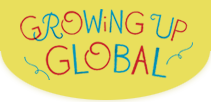“I love you when you bow in your mosque, kneel in your temple, pray in your church. For you and I are sons of one religion, and it’s the spirit.” -Kahlil Gibran
It’s that time of year when important holidays from major world faiths converge, we’re about to mark another anniversary of 9/11, and those getting the most attention seem to be the extremists on the margin. Most parents want our children to be much better than that – to live with respect, harmony, peace and the beauty offered by diversity. It’s better for them. It’s better for our world.
Learning about the world’s religions through the baggage-free lens of our children and from diverse people in our home communities offers a natural way to explore gently the positive aspects of world religions. To raise children who truly feel at home in the world calls for literacy in the world’s spiritual teachings. Gaining such literacy might start as an intellectual exercise about tolerance, but ultimately can be motivated by something more basic and profound – appreciation and love. Here are a few ideas for turning the convergence on the calendar and the debate in the media into a positive learning experience for the entire family.
- Use metaphors or analogies from familiar concepts to simplify the understanding of why there are so many religions and how anyone can make sense of them. For example, you can think of various religious traditions like the fingers of one hand: each one is distinct but they trace their source to the same palm. The idea of various lamps with different lampshades can demonstrate that the surface may differ, but at the core (the light) they share a common, vital purpose. Many metaphors from nature and common objects can teach how to see unity in diversity.
- Start with the common building blocks. The core of each holy book advocates concepts like love for family and community; universal virtues and becoming an ethical, “good” person; connection with the non-material side of life; searching for answers to mystical questions, like the source of our creation, and much more. When we realize we share concerns about so many basic questions, we can start to build respect and understanding.
- Learn from the stories and the arts. Like the knowledge of Bible stories, each faith tradition carries valuable stories and lessons that shed light on deeper truths. These can serve as a gentle and valuable way to learn about the world view and values of other faiths. Similarly, many great artistic expressions owe their flourishing to the inspiration born of various faiths. Appreciating some of the diverse art forms, from mosaics and manuscripts to mandalas, murals and tapestries can serve as a rich, non-threatening learning adventure.
- Make friends. Last, but not least, and most simply, friendships among people from diverse faiths can serve as the richest, most authentic learning experience. The times my children and I have experienced a Seder, Iftar, or devotional gathering at the homes of our friends were those when we learned the most. Instead of branding a group with the extremists’ face from the media, we can associate the teachings with our friend – human, kind, real.
Don’t be afraid to ask a friend if you could experience a celebration or service with them, or even ask questions about a particular point you’ve read about. These form vital steps toward peace-making, and that’s pretty likely to be at the core of your own faith, too.
For more tips on teaching children about other faiths, see Growing Up Global, Chapter 6 “What Do They Believe?”



Great post. Your consulting backs your blog posts. Good to know first hand.